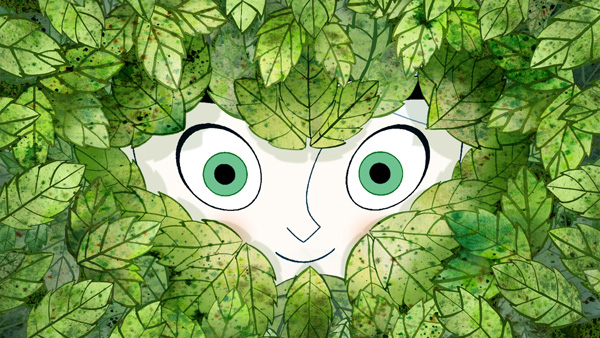|
Reviews of Recent Independent, Foreign, & Documentary Films in Theaters and DVD/Home Video

THE SECRET OF KELLS The Secret of Kells is foremost a beautiful film. The central conceit—the completion of an illuminated medieval manuscript named The Book of Kells—informs the entire aesthetic of the animated film, from the lavishly ornate geometrics of the characters and scenery to the mise en scène, which resembles the manuscript. The film is truly reminiscent of 1970s animation like Rankin and Bass or Fantastic Planet. Distinctive aesthetics drive the work, instead of workmanlike animation that merely exists to let the narrative unfold and, really, just to sell merchandise. Kells instead is firstly a work of art, and secondly a narrative. Which, of course, is the problem with the film. It would be one thing if Kells purported to be merely an art piece, but it seems to waver between that and a children’s story. Because it feels like no actual decision has been made as to which one it is, the film seems airy and ungrounded. The story itself has a real-life basis. How did the actual Book of Kells survive the Viking attacks on Ireland in the ninth century? Playing a kind of what-if game, the film follows Brendan, who lives in the walled-in Abbey of Kells under the direction of his uncle, Abbot Cellach. Cellach fears the Viking rampage and spends his days fortifying the walls, never allowing Brendan outside, and constantly instilling him with fear. When Brother Aidan, a refugee from another Viking attack, comes to Kells with his unfinished Book of Iona, he awakens Brendan’s creativity, making him question the fear-based life he has been living.
This is essentially the through line: the maturation of Brendan. In a
deeper sense, Kells is also about the limiting nature of fear,
and that regardless of the precautions one takes, the future is
unknowable. Living in fear of what may come prevents one from really
existing, and as Brendan comes to learn this, we see—in shorthand—his
development into an adult. This theme, though, simply sits there in the
background instead of really driving the story, the focus being mostly
on the visual. The plotting is so loose that the idea never really
develops. Without a strong central theme, events tend to feel
slightly disconnected. There’s a thematic tissue that connects them, but
it just feels wispy and diaphanous. Perhaps that is part of the design
as well.
Andrew Beckerman
|

